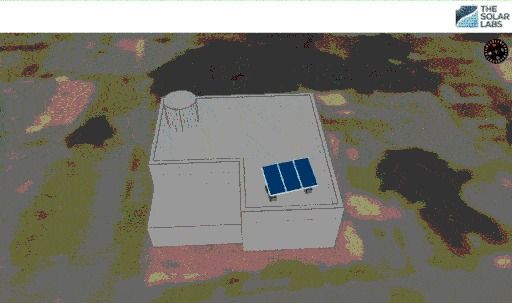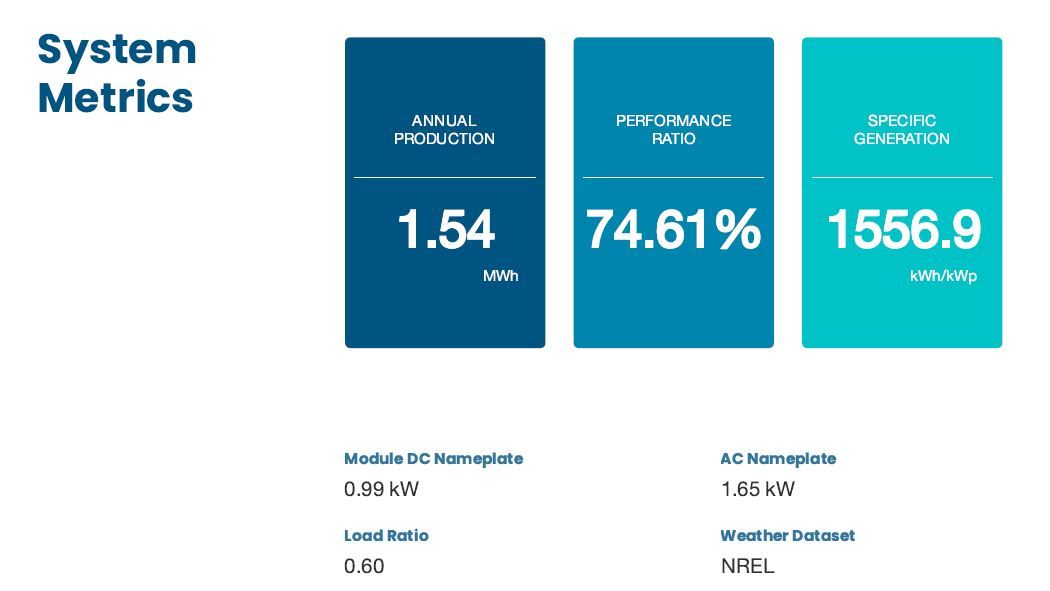Case Study: Cost Of installing a 1 kW solar rooftop system in Chennai

This case study is an actual detailed financial analysis for a 1kW solar rooftop system in Chennai. Through this case study, we will also be discussing other financial parameters such as Payback period, Internal rate of return(IRR), and total savings (up to 25 years).
Introduction
The total upfront cost is one of the most important parameters that influence the decision of a residential homeowner whether he will go solar or not.
This cost factor includes these key aspects:
- The total upfront cost (with and without subsidy)
- Total savings (over 25 years) and
- Payback period and
- Internal rate of return (IRR)
Through this case study we demonstrate the above factors for a residential homeowner in Chennai. Chennai has an active residential market with amazing policy support offered by nodal agencies. Moreover, for this entire study, we have used TSL design studio for
- Creating the 3D model of the site
- Shading analysis
- Generation simulation and
- Financial analysis
Methodology Followed
Collecting the site information

After the preliminary site data collection, TSL was used to perform the designing part.
Making 2D and 3D layout
First, the 2-D layout was created with precise mapping of the obstructions present on the roof. 3-D models were created with panel placement.
A total number of 3 modules were placed with row spacing of 0.807 m. The panels were placed in portrait orientation with 20° tilt and 180° azimuth.
Shadow Analysis
Shadow analysis was done to make sure that all the panels were shade-free. From the shadow analysis report for June 21st and December 22nd from 9 AM to 5 PM, we can observe that the panels are shade-free for 99.87% of solar time throughout the year. The shadow patterns for 21st June and 22nd December from 6 AM to 6 PM are shown below.


The selection of the system make
After finalizing the design part, systems were selected. These included:
- Modules – Waaree Energies WS-330 (18 No.)
- Inverter – Growatt New Energy: GROWATT 1500-US (240V) 240V [CEC 2011] (1 No.)
- Mounting structure – Premium
Energy generation estimates

Detailed Financial Analysis
The financial report generated from TSL highlights these parameters:
- Cost per kW
- Total Savings
- Payback Period
- Internal Rate of Return
Financial Analysis

Table of various financial estimates for a 1 kW installed capacity

Factors that mainly affect the above numbers are
- The cost of BOS: This includes the cost of systems used in the plant such as panels, inverters, wires, ACDB and DCDB, lightning resistors, mount type, etc. These costs vary with the system make and size.
- The size of installation: The larger the size of the installation, the lesser the per kW cost.
- Site location: This is an important parameter since the BOS varies from place to place. The per kW cost in Chennai will not be the same as the per kW cost in West Bengal.
- The total upfront incentives available at the time of installation: Subsidies can significantly influence the total upfront cost and Payback period numbers.
Conclusion
Other residential customers like Mr. Rajesh, who decided to choose solar are concerned about the huge upfront investment. This case study tries to highlight the actual cost of choosing a solar rooftop system in Chennai. As discussed above, these costs can vary depending on various parameters.
Know more in detail about the calculation behind the financial terms used in this case study such as payback period and internal rate of return.
Mr. Rajesh made a wise and informed decision to choose solar. Both Mr. Rajesh and his wife are working parents and they hardly spend time at their house during the day. So their daytime electricity consumption was very low. They didn’t want any unused or extra units (Kwh) generated by the panels to be sent back to the grid, so they opted for Zero export devices instead of Net Meters. Know more about Zero export devices.
This entire financial report has been generated using our TSL software. TSL is a SAAS provider, providing a one-stop solution to solar design engineers for all their design needs. At ARKA 360, our objective is to help you, as an installer, deliver to your clients as much power as promised, giving them the desirable return on their investment. Most importantly, our product strives to help you save time and money. Installers can optimize their workflow and reduce their number of vehicles while closing a deal. Know more about what our software offers.
We would like to thank Aaqib Quraishi (CEof O, OffCarbon), for providing us with all the relevant client information for carrying out this case study. OffCarbon is an end-to-end home solar energy consultancy that enables customers to switch to solar. Apart from just acquiring projects and finishing them, they aim to educate everybody – even potential customers – about the benefits of Solar Energy and its positive impacts on the Environment.

